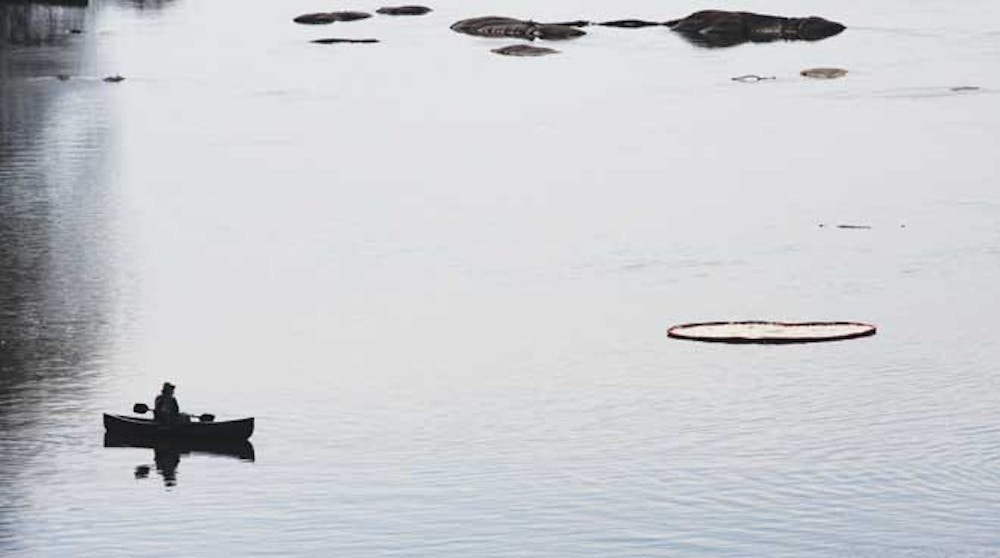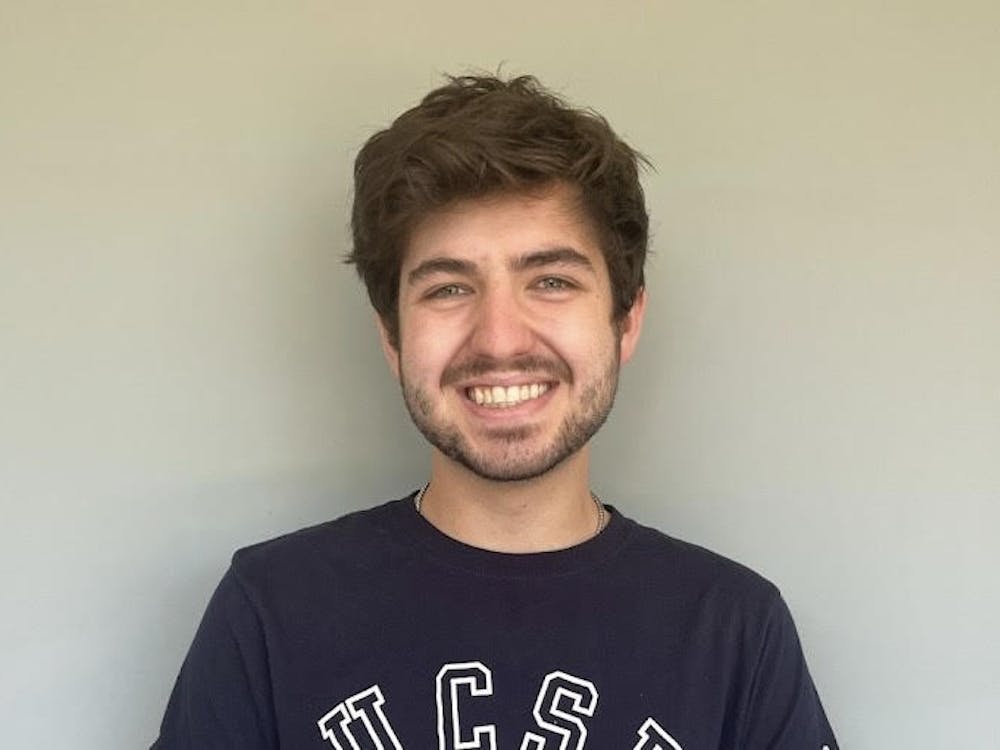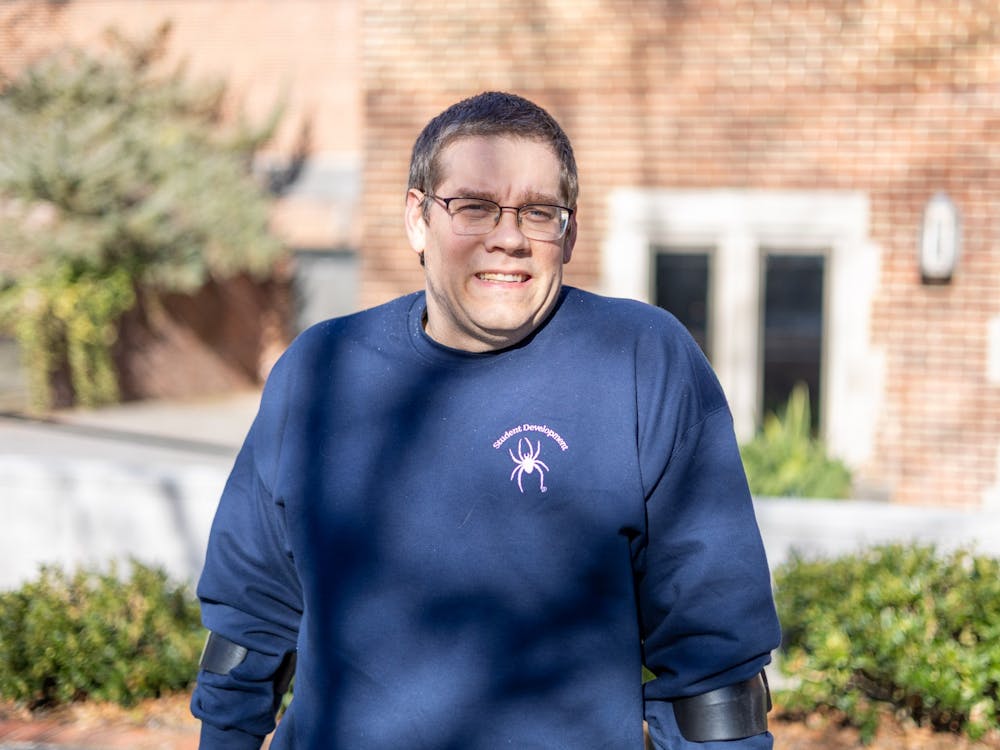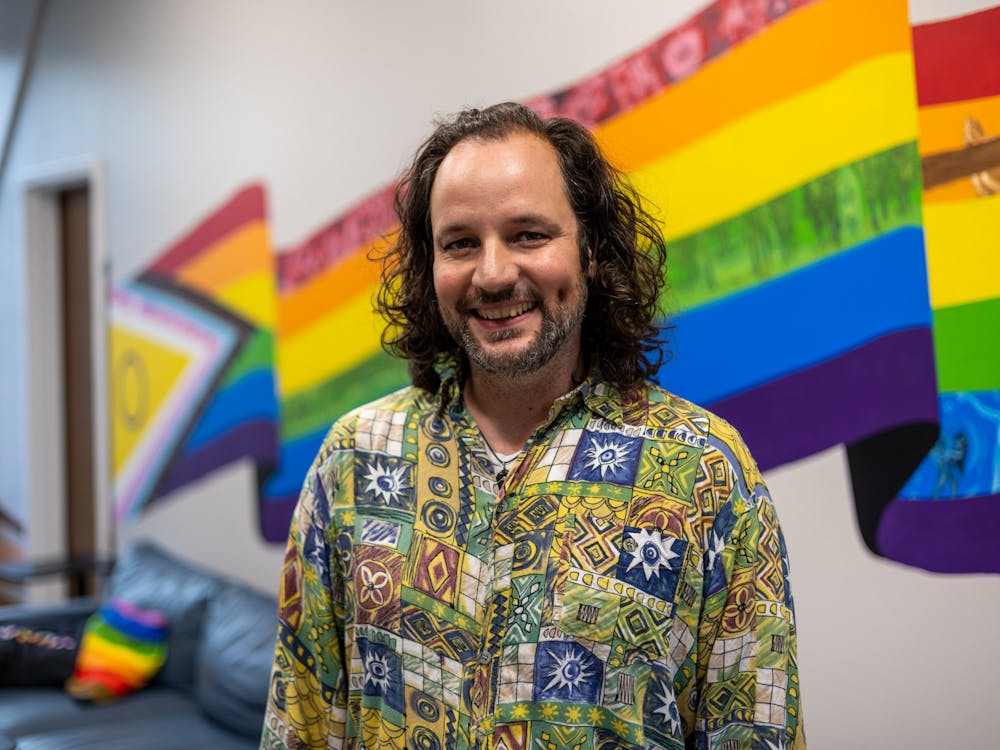Recycled poultry feathers contained within a floating structural barrier traveled down the James River as part of Richmond senior Sadie Runge's studio art thesis this winter.
Runge, a double major in environmental studies and studio art, created the environmental art performance to address nonpoint source nutrient pollution -- pollution that comes from an unidentifiable source. Examples of this type of pollution are runoff from agricultural fields and fertilizer, Runge said. Her project, named UFO -- Unidentified: A Feathered Objection to Polluted Water -- focused mainly on runoff from poultry farms.
"This includes nutrients like phosphorus and nitrogen that are in the poultry race that leach into the water supply if not properly contained," she said.
Chicken feathers were used to help clean up the BP oil spill in the Gulf of Mexico, Runge said. Chicken feathers have been documented as an effective natural absorbent of heavy metal ions from water effluent, according to Runge's website.
"Instead of potentially contributing to nutrient pollution," the website reads, "these cleaned feathers are reused to benefit water quality and raise awareness of the environmental concerns within our watershed."
Runge had been particularly interested in water-quality legislation in Virginia, she said. She used her UFO to research Virginia's currently changing policy regulations including the Environmental Protection Agency's Chesapeake Bay Total Maximum Daily Load and Watershed Implementation Plan, according to Runge's website.
For her thesis, Runge wanted to combine her majors and use the "aesthetic language of art" to make a more complex, scientific, environmental concept of water pollution accessible to people who didn't have a background in science, she said. A self-proclaimed "river lover," Runge wanted to also do something that brought people to the James River to interact with it, she said.
Her decision to use chicken feathers was "Googling good luck," she said. When researching different methods of reducing water pollution, she found information on the Internet that led her to the use of poultry feathers. From there, it was just a matter of finding the feathers, she said.
Runge called Tyson Foods -- the world's second-largest processor and marketer of chicken -- to ask to use their discarded feathers but "never got anywhere," she said. Finally, Avery Branch Farms in Amelia Courthouse, Va., offered to donate as many feathers as she needed, she said.
The feathers came "straight off the chicken's back," Runge said. She described how some feathers were bloody and still had pieces of flesh on them. To clean them, Runge used industrial-sized trashcans full of bleach solution.
The clean feathers were placed into a floating barrier and sent down the river. Runge had to break through ice to launch the UFO for her first run in December, she said.
Runge liked that people had to come to the James River to see the UFO because she didn't think students visited the river enough, she said.
Enjoy what you're reading?
Signup for our newsletter
"The turnout was great," Runge said. "Even people who didn't know about the project would yell out, 'What is that thing?'
"This was about making that connection between our actions, our perception of our environment and what we should do with our life and how we can potentially collaborate with a lot of different people to suggest or promote our own way of making change."
When asked if chicken feathers have a future in the treatment of water pollution, Runge said they were a great way to recycle something that was a waste product, and that there was potential for different ways to think about what people do with waste.
"It needs some developing," she said. "But I think the potential is definitely there."
The feathers now sit in the lab waiting to be tested for lead after traveling through the water, she said.
Contact staff writer Brittany Brady at brittany.brady@richmond.edu
Support independent student media
You can make a tax-deductible donation by clicking the button below, which takes you to our secure PayPal account. The page is set up to receive contributions in whatever amount you designate. We look forward to using the money we raise to further our mission of providing honest and accurate information to students, faculty, staff, alumni and others in the general public.
Donate Now



